Geoff
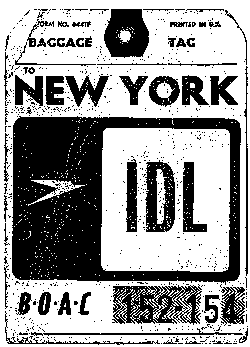 Reading
the latest edition of FlyingTypers this morning, and seeing your photo
of the TWA visitor’s pass from JFK that you held on to, reminded
me of the attached BOAC luggage tag from LHR to IDL that is currently
sitting in my office. Priceless… Reading
the latest edition of FlyingTypers this morning, and seeing your photo
of the TWA visitor’s pass from JFK that you held on to, reminded
me of the attached BOAC luggage tag from LHR to IDL that is currently
sitting in my office. Priceless…
Enjoy reading your online newspaper regularly.
Sincerely,
David
Masterpiece International
David C. Cohen
Vice President
39 Broadway, Suite 1410, NYC, NY 10006
Nice write up in FlyingTypers.
Congratulations.
Well-deserved recognition.
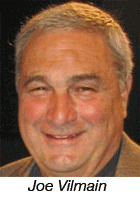 Geoff had it wrong, however, about Bob being
the last cargo exec at TWA.
Geoff had it wrong, however, about Bob being
the last cargo exec at TWA.
Joe Vilmain took charge for a couple of
years after Bob left the company.
Mark Gilbert
Manager, Postal Affairs
American Airlines
Whoops. Nice catch Mark. Apologies and greetings to Joe, a super numerator
who served TWA for 37 years and one month, culminating his career as Corporate
Vice President with responsibilities, including passenger, cargo reservation
sales, and international sales and operations. Today Joe is still active
at Schneider Electric. (G )
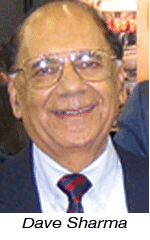 Dear
Geoffrey, Dear
Geoffrey,
Read your article about Robert Uttmark of
UA.
Being an ex-TWA employee, I sought out Robert’s
assistance to revive mail business for my new company, Brussels Airlines,
formerly known as Sabena Belgian World Airline. Robert has been the most
helpful gentleman, and without any hesitation joined hands with me and
placed us on the USPS map again. Currently we carry mail from UA to most
of the African countries we serve.
Thanks, Robert, for your kind help.
Dave V. Sharma
Regional Director, USA
Geoff,
I just want to take a moment to thank you
for the wonderful article. It could not have come at a better time….
this week I turn 65 and a lot goes thru one’s head on the eve of
a milestone birthday.
This was a strong validation article for
me and truly appreciated.
It was also very interesting……
Bob
Robert Uttmark
United Cargo
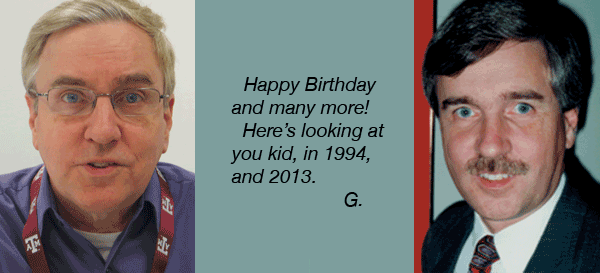 |
RE:
Connie Takes Wing Over Europe
Dear Geoff,
Thank you very much for the response on
the Paris Connie! I agree, I think it was the most beautiful a/c ever
built.
My father worked on the first one that
flew, the night Howard Hughes & Jack Fry flew it from Burbank to Washington,
D.C., & set the transcontinental speed record, delivering it to the
USAAC at DCA. Out of deference to all the work Mr. Hughes had done to
bring the Connie to life, the military let him deliver it from the factory,
instead of sending a military flight crew to get it.
What the military didn’t know, was
that Mr. Hughes convinced Lockheed to paint the new beauty in TWA’s
livery, instead of Army O.D. green! They were not amused when the great
silver, red & white Connie came screaming into DCA that night in 1944.
My father was commissioned a Captain in
the Air Transport Command while working for TWA, training the Army mechanics
to work on the Boeing Stratoliners & DC-3s the Army had requisitioned
from the airline. They called him out of bed early that morning, saying
there was a new bird on the ramp & something was wrong w/it. Dad went
to the airport, listened while they ran up one of the engines that seemed
to be misfiring. He said it sounded like
Mr. Hughes had set the fuel mixture a little lean, trying to get a few
more RPMs out it while trying to set the record.
Sure enough, they pulled the head off the
suspect piston, and found the intake valves were burned. They replaced
the valves, started it up, & turned it over to the Army.
At least that’s the legend that’s
been handed down to me, all these years!
As you may recall, the Connie went on to
be Ike’s favorite a/c, and became Air Force One after Ike was elected
president.
Geoff, again, thank you for the article
on that wonderful airplane.
Kind Regards,
Jerry Hyatt,
from Jess Hyatt, TWA 1940-1973
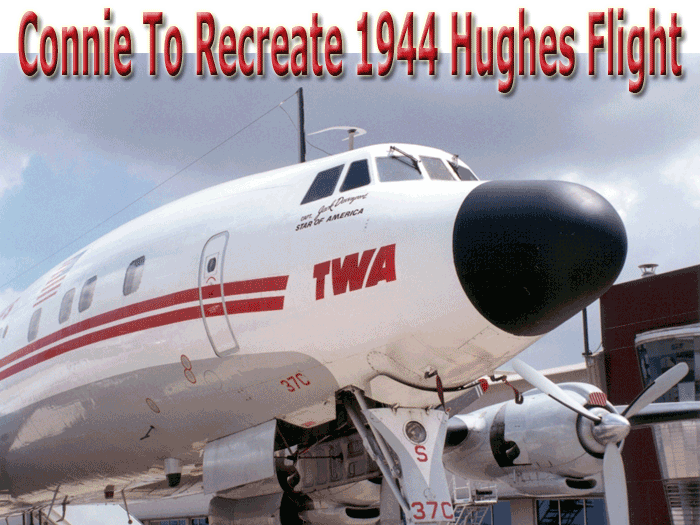 |
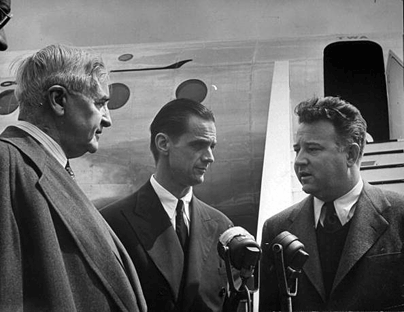 Thanks
again Jerry. Thanks
again Jerry.
Indeed, on April 17, 1944, Howard and TWA
made aviation history with that flight across the country, in a record
breaking 6 hours and 58 minutes with a top speed of 340 miles per hour!
Here Hughes (center), who died in 1976,
is pictured with U.S. Secretary of Commerce Jesse H. Jones (L) and Jack
Frye, talking to the press at DCA in 1944.
But in 2013 some folks are out to make that
cross-country journey again in less that a year from now, flying one of
only three constellations left in the world that are up to the task.
The National Airline History Museum is trying
to raise $3.2 million to restore the Lockheed for take off on April 17,
2014—the 70th anniversary of the 1944 inaugural flight piloted by
Hughes and TWA president and co-founder Jack Frye.
“It was a major leap forward, which
is why we want to do the flight because it was so significant in the development
of the airline industry,” said John Roper, the museum's vice president
of operations.
“It was more than national travel;
it ushered in global travel.”
The museum will make Hughes' journey with
the aid of a copy of the original flight log, beginning in Burbank, CA,
and ending in Washington.
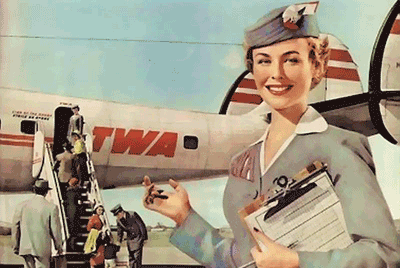 Along the way, it will pass over the states
of Arizona, New Mexico, Texas, Oklahoma, Kansas, Missouri, Illinois, Kentucky,
and the Virginias.
Along the way, it will pass over the states
of Arizona, New Mexico, Texas, Oklahoma, Kansas, Missouri, Illinois, Kentucky,
and the Virginias.
The “Star of America”
was originally a cargo plane created in 1958 for Slick Airways; later,
it was found in storage at Falcon Field in Mesa, AZ, under registration
number N6937C. It was one of the last Constellations off Lockheed's assembly
line.
This Lockheed Constellation was converted
to a passenger configuration and she promptly began flying the Air Show
circuit in 1986, thanks to the Save-A-Connie foundation.
"Star of America" was featured
in the movie "The Aviator" (2004).
Today Save-A-Connie is called The National
Airline History Museum, but Star of America blew a jug and has been grounded
since 2005.
You can help.
Membership, donations, etc:
http://www.flightoftheconnie.org/
Geoffrey
Geoffrey,
“Say Goodbye To My Little
Friend?”
The B727 was/is a horrendously
noisy aircraft.
The completely inadequate FAA response
to that noise soured the public to airports and has made it very difficult
to add runways and increase airside capacity.
As far as the FAA was concerned,
the problem was the people complaining about the noise, not the noise
itself, and they fought any attempt to impose better noise standards.
How many years has it been since
the stage 3 standards were adopted, 15 or 20?
I am sure that the people living
in the 727’s flight path were delighted to see it go.
Yours truly,
Enoch Lipson |





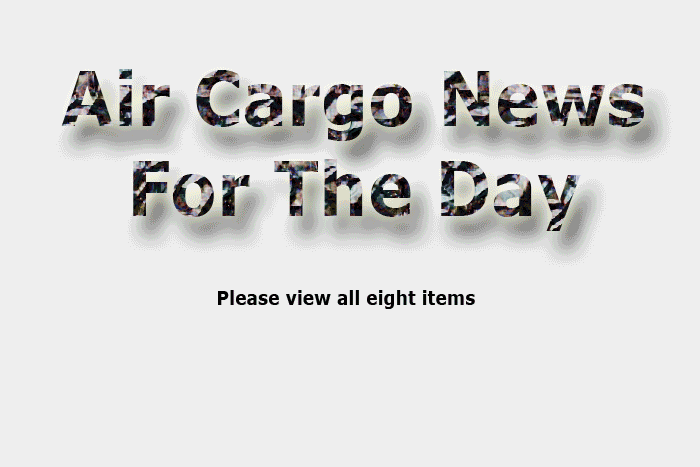
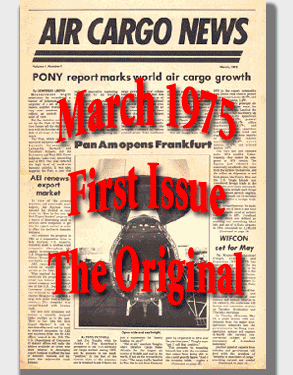
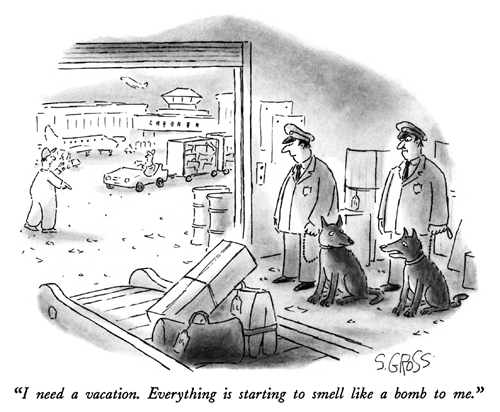
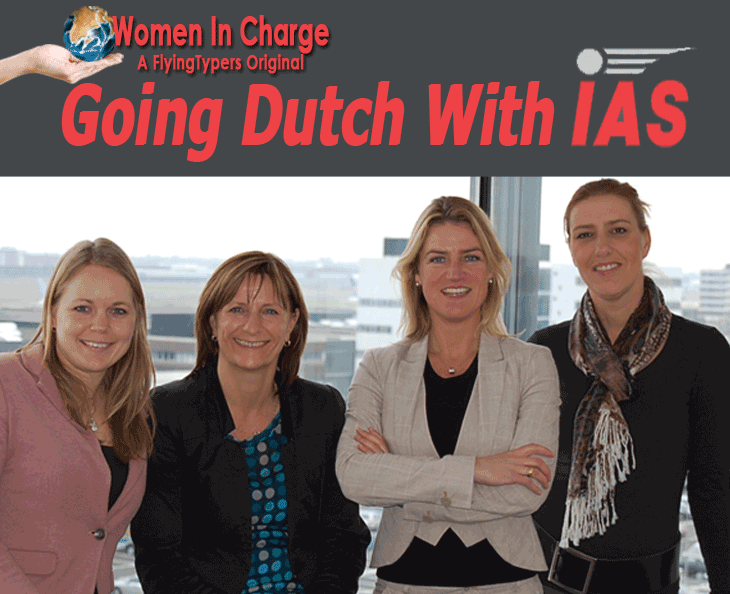
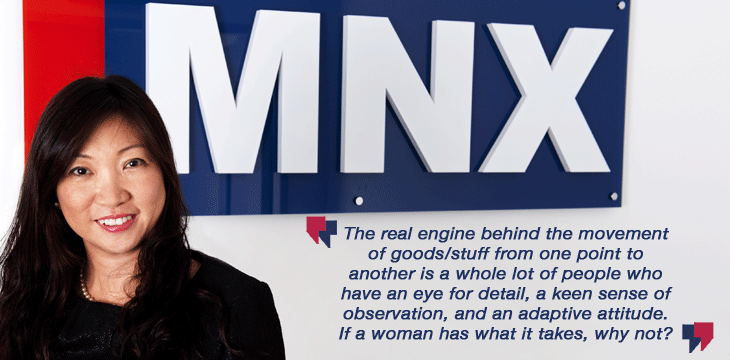



 Thanks
again Jerry.
Thanks
again Jerry. Along the way, it will pass over the states
of Arizona, New Mexico, Texas, Oklahoma, Kansas, Missouri, Illinois, Kentucky,
and the Virginias.
Along the way, it will pass over the states
of Arizona, New Mexico, Texas, Oklahoma, Kansas, Missouri, Illinois, Kentucky,
and the Virginias.